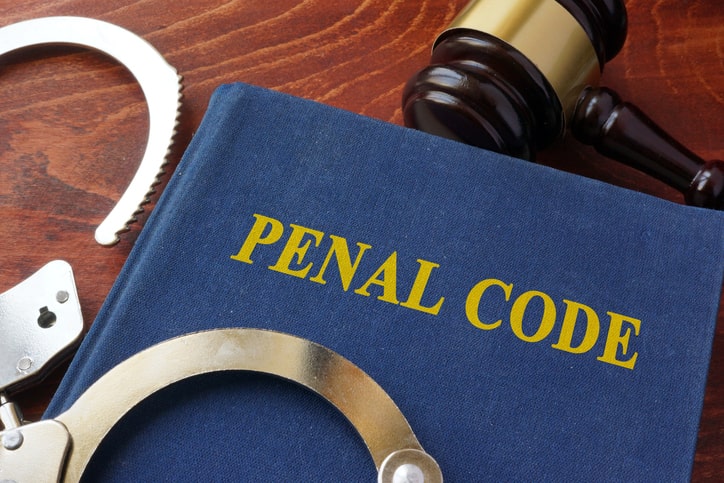California Penal Code
The California Penal Code defines the laws, regulations, and more regarding criminal offenses in the state of California.
The California Penal Code is the main set of statutes that specify the state’s criminal offenses and procedures and form the basis for criminal law in California. Originally enacted in 1872, the California Penal Code has been substantially revised and amended throughout the state’s history. The California Penal Code is changed when the state legislature passes a bill. As soon as the governor signs the law, the code is officially changed to the updated version. New statutes and laws are typically added every year, with changes mainly being made to existing areas of the code.

Today’s penal code California includes six parts which are divided into chapters and titles with sections forming the code’s lowest division. These sections are numbered in accordance with their parts.
Here, the San Diego criminal defense lawyers at Griffin Law Office provide an overview of the most substantial sections of the penal code and information about how the penal code works in California.
Like most of California’s legal codes, the state’s penal code is divided into six parts. Most of these parts contain titles, which in turn are sometimes subdivided into chapters.
Part 1 of the penal codes California covers numerous areas and is the largest part of the code. It begins with defining the legal terms and functions of the code, filling the first two titles of Part 1. Starting in Section 33, the code goes over criminal offenses versus the state, including treason. This continues until Title 7, which covers the court systems and laws about perjury.
Here is a summary of the remainder of Part 1:
Part 2 of the code sets out the state’s system for criminal procedures. Part 3 establishes the state’s penal system. Part 4 sets out the state’s laws regarding criminal investigations, training for law enforcement, the prevention of crime, and gun control. Part 5 establishes the California Peace Officers Memorial Fund and Part 6 establishes the weapons laws of the state of California.
With extensive experience representing clients facing a wide range of criminal charges under the California Penal Code, including crimes of violence, white-collar crime, and theft, the attorneys at Griffin Law Office have what it takes to fight your charges with the utmost skill and professionalism.
As mentioned above, Part 2 of the California Penal Code (Sections 681–1020) outlines the state’s criminal procedure system. After a person is arrested for a criminal offense, she or he is formally involved with the criminal procedure. The procedure does not end until the case is resolved, either by a conviction or dropped or dismissed charges.
Here are the steps of California’s criminal procedure as outlined in Part 2 of the California Penal Code:
There is a lot at stake in a criminal case, so it is vital that you have qualified legal help throughout this process. If you are facing criminal charges or an investigation in California, please contact our firm as soon as possible so we can stand by your side each step of the way. As your criminal defense attorney, Patrick Griffin of Griffin Law Office will defend your future at every turn, and he won’t back down until we’ve reached a favorable resolution.
Penal code sections outline the official meaning of a criminal offense. Court case law and jury instructions for these offenses provide additional assistance on how specific areas apply.
The penal code itself does not include drug laws, which are instead included under the California Health And Safety Code, or laws referring to cars and driving, which are included in the California Vehicle Code. Usually, the Penal Code is described by a section, such as a 148, for example, which refers to resisting a law enforcement officer.
The sections of the California Penal Code are numbered beginning in Title 7 and continue onward. Some numbers are avoided to permit the addition of new laws; others are added on to, such as 607a, 607b, and so on.
Below is a list of some of the most frequently referenced sections from the California Penal Code:
If you or a loved one has been charged with any of the above crimes under the California Penal Code, don’t hesitate to contact our trusted criminal defense firm. From forgery to murder, we’ve seen it all, and we’d love to help you, too.
If you are facing criminal charges in California, it is essential to discuss your case with a knowledgeable California criminal defense attorney. When you work with Griffin Law Office, APC, we can help describe the nature of the charges against you, the possible repercussions if you are convicted, and the prospective legal defenses that you may be able to mount to protect your rights and freedom.
Your criminal defense attorney will likewise go over the possibility of securing a plea deal with the prosecutor in which you accept a misdemeanor conviction rather than a felony conviction and get a lighter sentence in exchange for your cooperation. However, the specific defense strategy we use will depend on the unique factors of your case, so it is essential to schedule a free consultation with us as soon as possible.
With so much at stake, time is of the essence, so please contact us today to begin building a strong defense.








Our San Diego defense lawyers will provide you with a consultation that provides advice that can help minimize charges and either eliminate those allegations or reduce the judgments of each. It is vastly different to receive a sentence of community service than a prison sentence or house arrest. To improve your likelihood of a reduced sentence, hire an expert San Diego County defense lawyer near you like Patrick Griffin.